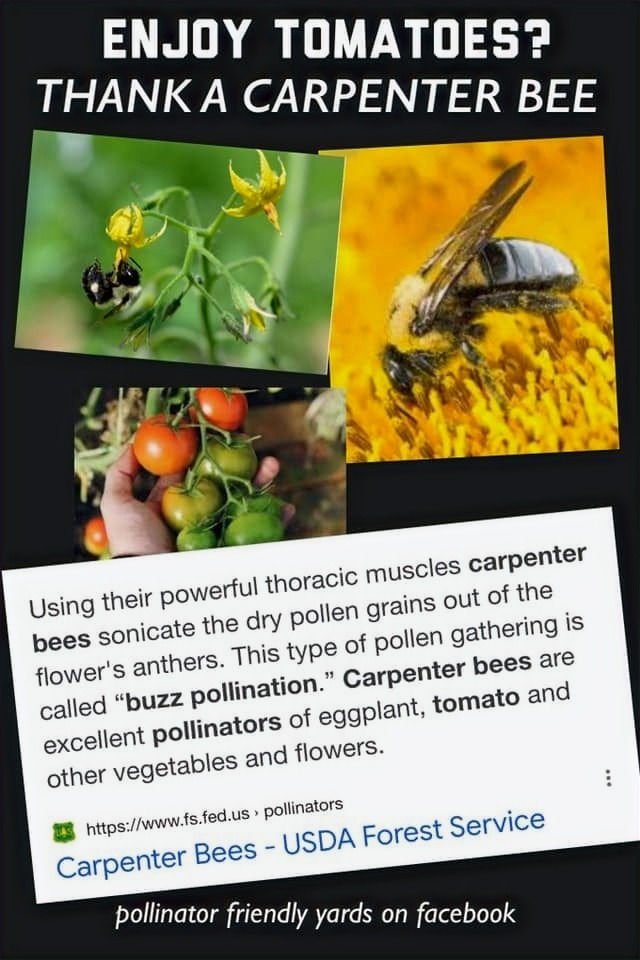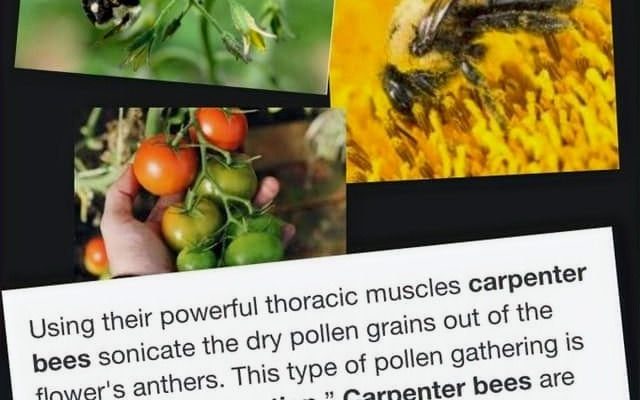
Carpenter bees have a unique knack for pollination—better than many other bee species in some cases. They’re like the unsung heroes of the garden, often overshadowed by their more popular honey-making cousins. These bees are named for their habit of burrowing into wood to build their nests, but don’t let that fool you into thinking they’re destructive. In fact, they can significantly boost your garden’s productivity. Let’s dive into the world of carpenter bees and explore how they can benefit you as a gardener or farmer.
What Are Carpenter Bees?
Carpenter bees are large, solitary bees that belong to the genus *Xylocopa*. They come in various species, but you can typically spot them by their distinct black and yellow coloration. Unlike honeybees, carpenter bees don’t live in colonies. Instead, each female builds her own nest, often drilling holes into wood—which has earned them a bit of a bad reputation. But here’s the thing: those wooden homes aren’t just random; they serve a crucial purpose.
These bees are excellent pollinators. They visit flowers, gather nectar, and help with the all-important transfer of pollen from one blossom to another. This process is vital for plant reproduction. So, when you spot a carpenter bee zipping around your garden, know that it’s not just mindlessly buzzing about—it’s doing some serious work that can lead to healthier plants and better yields.
How Carpenter Bees Help Pollination
Carpenter bees are often underrated when it comes to pollination. They’re known for their ability to “buzz pollinate,” which means they vibrate their bodies while resting on a flower. This action shakes off pollen from the flower’s anthers, making it available to fertilize other flowers.
Here’s a simple breakdown of how they help with pollination:
- Efficient Pollen Transfer: Their fuzzy bodies capture pollen effectively, allowing them to carry it from flower to flower.
- Specialized for Certain Flowers: Some plants prefer the unique buzzing technique of carpenter bees, making them vital for certain crops like tomatoes and blueberries.
- Longevity in the Field: Carpenter bees can forage for longer periods and often visit the same area multiple times, ensuring a thorough pollination process.
So, if you’re cultivating crops or flowers that require consistent pollination, attracting carpenter bees to your garden can lead to a more bountiful harvest.
Boosting Crop Yields
If you’re a farmer or a dedicated gardener, one of your primary goals is likely to maximize your crop yields. Carpenter bees can be your secret weapon in this quest. Studies have shown that crops pollinated by carpenter bees often show higher fruit set and increase in size.
For instance, fields of cucumbers and blueberries can benefit significantly from the presence of these bees. The more efficient the pollination, the more fruits and seeds are produced. This is particularly important for farmers looking to enhance their product quality and quantity. If you’re relying on other pollinators, like honeybees, adding carpenter bees into the mix can create a robust pollination network that boosts your overall productivity.
Natural Pest Control
Another interesting benefit of carpenter bees is their potential role in pest control. While they primarily focus on flowers, they tend to avoid damaging plants and crops. By fostering an environment that attracts carpenter bees, you may inadvertently keep harmful pests at bay.
Here’s how it works:
- Reduced Need for Pesticides: With more beneficial insects around, there may be less need for chemical pest control measures.
- Encouraging Biodiversity: Carpenter bees attract other helpful insects, creating a balanced ecosystem that naturally combats pests.
- Improved Soil Health: Their activities may also help aerate the soil, promoting a healthy environment for your plants.
By encouraging carpenter bee populations in your garden, you could boost not just pollination but overall ecological health.
Friendly Neighbors: Attracting Carpenter Bees
If you’re sold on the idea of welcoming carpenter bees into your garden, how do you attract them? Thankfully, it’s easier than you might think! Here are some simple steps to create a friendly environment for these buzzing helpers:
- Provide Nesting Sites: Since carpenter bees like to burrow into wood, leaving untreated wood surfaces or creating small wooden nesting blocks can encourage them to set up shop.
- Plant Native Flowers: Native plants are often the best for attracting local pollinators, including carpenter bees. Think colorful, aromatic blooms!
- Minimize Pesticides: Chemicals can deter bees. Try to use organic practices that prioritize the health of your beneficial insects.
Creating this inviting atmosphere can lead to healthier plants and a more vibrant garden.
Understanding Their Role in the Ecosystem
Carpenter bees play a vital role in the wider ecosystem. They not only support our gardens and farms but also contribute to the overall health of the environment. By pollinating a diverse array of plants, they help maintain biodiversity. This is crucial for healthy ecosystems and sustainable agriculture.
Ultimately, having carpenter bees around is like having a little team of experts working to ensure the health of both wild and cultivated plants. Their contribution to food supplies and the greater environment cannot be overstated.
As we’ve explored, carpenter bees offer a wealth of benefits for both gardeners and farmers. Their exceptional pollination skills, ability to boost crop yields, and potential for natural pest control make them invaluable partners in the garden. Embracing these buzzing friends can lead to a more productive and vibrant ecosystem.
So, the next time you see a carpenter bee zipping around your flowers, remember that it’s not just another insect; it’s a helper in your gardening journey. Think of them as the little gardeners—working tirelessly to ensure that your hard work pays off in the best way possible. By fostering a friendly environment for carpenter bees, you’re not just improving your plants but also contributing to the health of the planet. Happy gardening!

